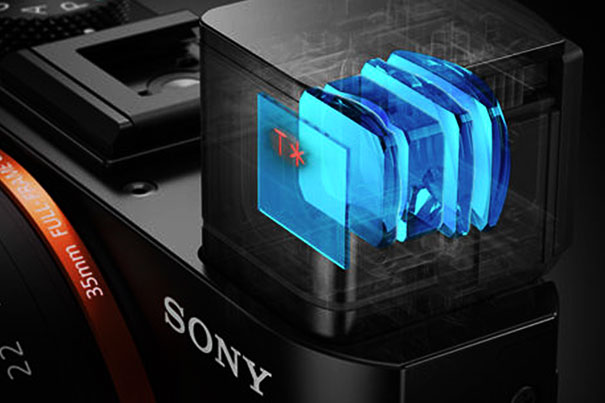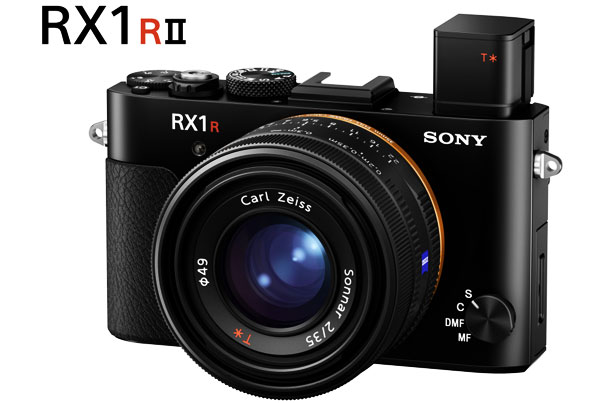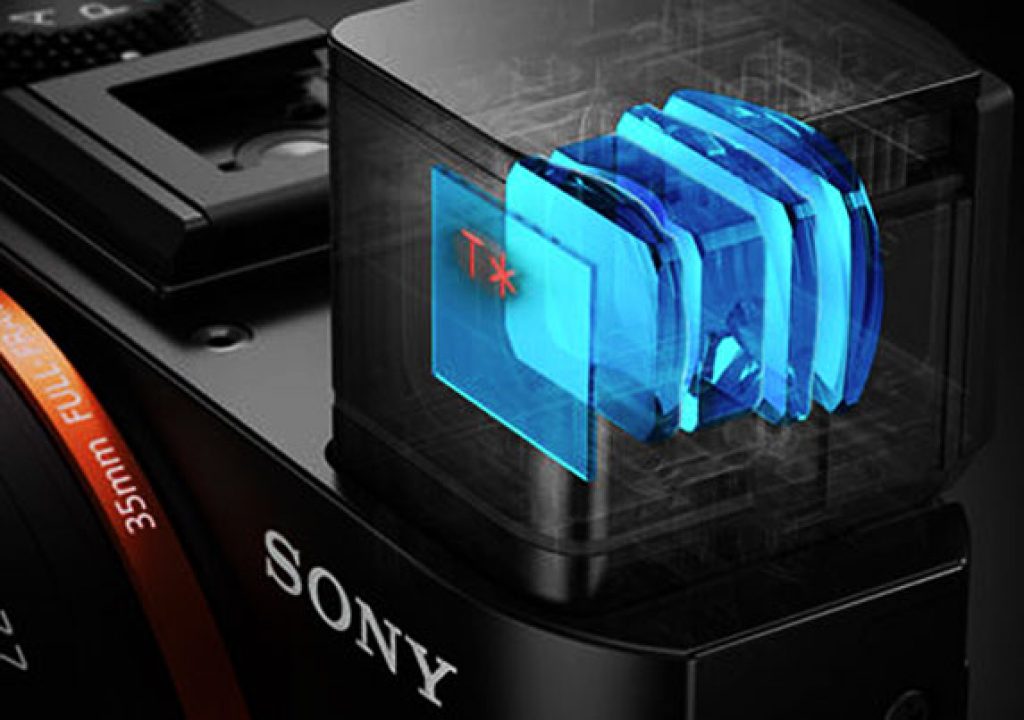
While we’ve all grown used to pop-up flashes, not many are aware of pop-up viewfinders. It’s a trend Sony has been partially responsible for in recent years, with a new step in the new 42,4 MP compact camera just launched: the RX1R II.
The Sony Cyber-shot RX1R II will stay in history as the first camera to offer photographers the chance to adjust the optical low pass filter on their camera, in order to control the balance of image resolution and presence of moiré or colour artifacts to match the subject. It’s a logical step after Sony first removed the low pass filter in some of their cameras, following a trend in the industry that started in the medium format sensors. In the RX1 series Sony played with the AA filter trying to find the ideal configuration: present on the RX1, absent on the RX1R. Now with the RX1R II they give users a choice.

RX1R II: a camera of firsts
But the Sony Cyber-shot RX1R II is a camera of firsts, in fact, as it is the first in Sony’s RX line of compact cameras to feature Fast Hybrid AF capabilities, the first to offer a high resolution 42,4 MP sensor and also the first from the RX1 series to offer a convenient retractable XGA OLED viewfinder for eye-level shooting, which has been implemented with minimal change in overall body size from its predecessors.
This camera’s viewfinder is something I found interesting and a good excuse to look at some solutions implemented through times, when it comes to viewfinders. I leave aside the discussion about the advantages of OVF (Optical Viewfinders) and EVF (Electronic Viewfinders), as it does not belong here. Still, I feel one should refer the solution found by Fujifilm for cameras like their X-Pro1, that present a Hybrid Multi Viewfinder, giving users the freedom to switch between an optical and electronic viewfinder, to explore the advantages of both.
Fujifilm’s Hybrid Multi Viewfinder used on some models of the X series of cameras
The problem with the hybrid viewfinder first used by Fujifilm was that it could only be used with a lens built for the camera, and would not work with interchangeable lenses. The Hybrid Viewfinder has evolved to meet the challenge of interchangeable lenses. According to Fujifilm, “viewfinder magnification automatically changes when an XF series lens is mounted, and because there is very little noticeable difference in the angle of view when switching between OVF and EVF, viewing in either mode is smooth and natural.” Unfortunately, Fujifilm is not using this type of viewfinder across their whole line, which is limited to a “regular” EVF.
Collapsible viewfinders
Pop-up viewfinders sound like something modern, but in fact they are not. The first examples date to analog cameras, as far back as the early days of the industry. Although it was usually called a collapsible viewfinder, like the one shown on this Kodak 35 camera from 1938 (picture by Kevin Murray at English Wikipedia), the viewfinder would “pop-up” from the top of the body when a lever was pressed.
Although other companies have used pop-up viewfinders, I want to center on Sony’s usage as it documents perfectly the evolution of not only this type of viewfinder but also the changes in camera design it offers. In fact, from early cameras, both, mirrorless and compact, that either had no viewfinder, many times due to space constraints (as camera makers said), or had a huge and ugly external viewfinder (like the Olympus Pen E-P5), we’ve arrived to a point where the viewfinder can hide inside the body of the camera and only show up when needed.
The fact that Sony has done so in a camera with a 42,4 MP full frame sensor that fits in the palm of your hand, makes one wonder why Canon could not fit a similar viewfinder inside their recent PowerShot G5 X, which is, after all a 1 inch sensor. Comparing models side by side, one has to give Canon the prize for the ugliest camera of modern days…
External and built-in viewfinders
Before someone leaves a comment about it, I do know that the lens used on each system does make a difference, but still, in terms of body, Sony seems to be able to place more stuff in about the same space. And hey, they still had to find enough space for a lens that, being full frame, is bigger. So, in terms of economy of space they seem to be leading by example.
The pop-up viewfinder has been a constant on some of Sony’s models, from the RX 100 III, from 2014, which can be seen as the culmination of Sony’s experiences with viewfinders. The first model did not have one, the second offered the chance to have an external – and rather expensive – EVF placed on the hotshoe, and finally the RX 100 III presented a pop-up viewfinder, a solution much more elegant than any external EVF. Since then Sony implemented the solution in models like the HX90 and HX90V, RX100 IV and now on the RX1R II, a first in a full frame model.
The RX1R II has a built-in retractable 2.4 million dot XGA OLED Tru-Finder that pops up and down with simple one-push operation and features. The viewfinder features anti-reflective ZEISS T* Coating and four glass elements, including two molded-glass aspherical lenses that work together to deliver a magnification of 0.74×4 and clear corner-to-corner visibility with minimal distortion and brilliant reproduction of recording detail. The EVF can instantly, precisely, let you preview how your settings will affect an image. A separate eyepiece cup is included.
The lesson from Minolta
The ability to place a whole viewfinder inside a camera body may seem, again, like something of the digital age, but in fact, it isn’t. Back in the 1990’s Minolta created a unique system to place a whole viewfinder inside their SLRs of the APS system. Yes, Minolta created SLRs without the hump on the top, where the pentaprism usually is placed. I still have a Vectis S-1 from that period (1996), which I used intensively with multiple lens, from a V 50 mm f/3.5 Macro to a V 400 mm f/8 Reflex, a lightweight kit which was a joy to carry around.
|
Olympus Porro Prism When it comes to viewfinders, Olympus followed, in 2004, the same concept as Minolta did in 1996 with the Vectis S-1. In fact, the E-300 camera, a DSLR of the Four Thirds system (at the time mirrorless and Micro Four Thirds had not been “invented” yet) system does not present the traditional pentaprism hump. Olympus used a Porro prism system, fitted sideways, with the viewfinder located on the left side of the body. In fact, the E-300 camera, and the E-330 model (the first to allow the use of Live View, in 2006) use the system, and show a body design very similar to the one Minolta explored previously on their Vectis S-1. |
At the time the engineers at Minolta devised a way to place the viewfinder to the left side of the camera, like most rangefinder cameras, through a system of mirrors instead of a pentaprism, that would bring the image directly from the lens to the viewfinder, allowing, at the same time, to design a compact body which fits ergonomically in the hand. One interesting aspect is that the construction allowed to offer the viewfinder, a pop-up flash and a hotshoe for external flash, all on top of the camera, something that seems almost impossible to find in some of today’s camera designs. Strange… even more strange when one considers the compact dimensions for the Vectis S-1 APS SLR are 126,5 x 76,5 x 63,5 mm, with a (light)weight of 365 g for the body.
The Minolta Vectis S-1 is a good example that an integrated viewfinder can be built, and there is no need for a hump on top of the camera, be it the pentaprism on a SLR, or the pentaprism-like present on some recent mirrorless cameras, which is there more for design reasons, I suppose, as we were told the hump was going to go when they first appeared.
The Vectis S-1 shows that it is possible to make an optical viewfinder. I guess it would also accommodate an electronic viewfinder. If it can be done, then maybe Sony could do it. After all, they are the guardians or Minolta’s legacy, as Sony bought Minolta’s assets and technology. I see no reason why Sony does not recover that system, for those that still prefer an optical viewfinder instead of an EVF. Or both, building a hybrid viewfinder inside the body. The Vectis S1 sleek body seems like a good starting point for a new breed of cameras with built-in viewfinders.


